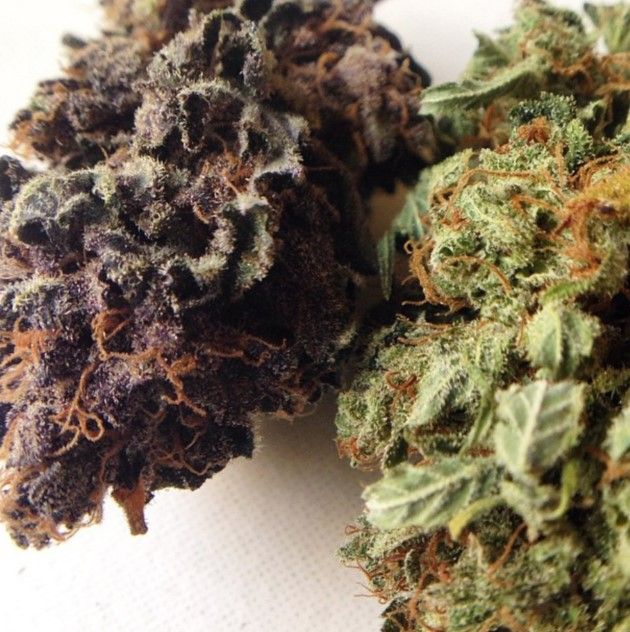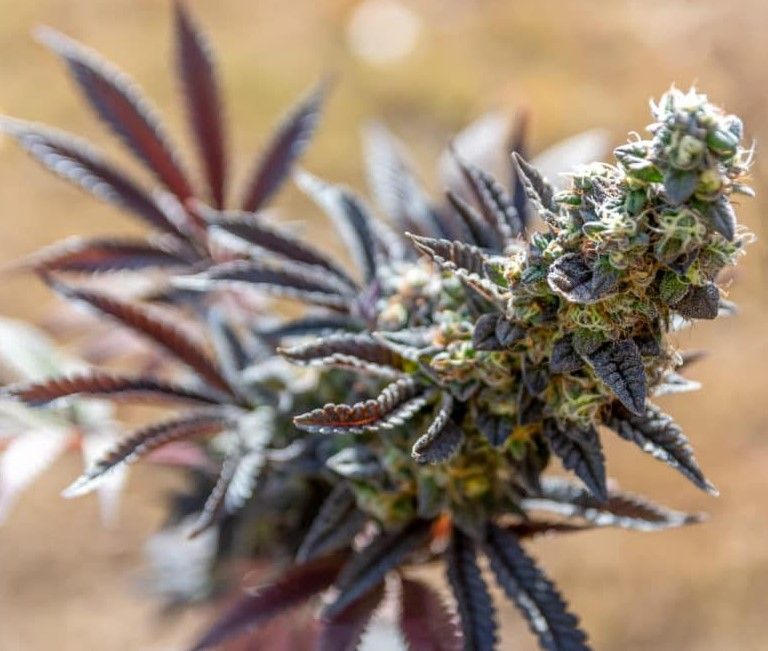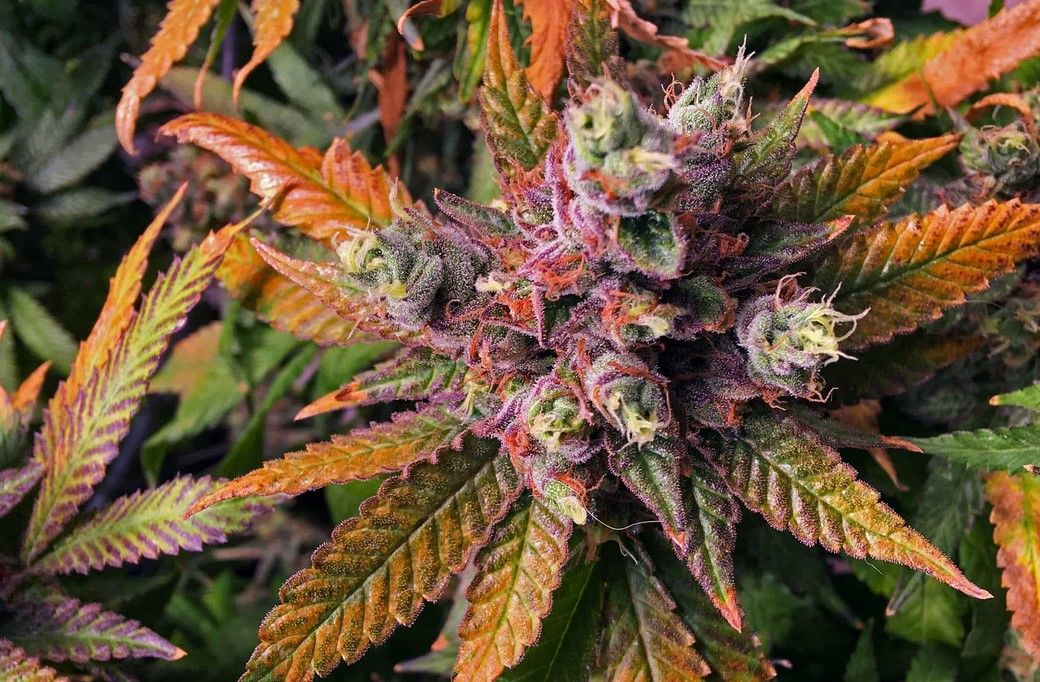Many people are under the false impression that marijuana is mostly green. You may hear of a strain with purple tints now and then, but on the whole, you might believe it looks rather “boring.” In fact, cannabis can be cultivated in a variety of hues as long as the genes are correct.
Strains and seeds with names like Hot Chocolate, Granddaddy Purple, ACDC, Pica Queen and Skywalker are just a few examples of cannabis strains with vibrant hues. While not all strains have bright colors, many of them do have names that imply such. Unfortunately, you can’t transform any strain into a cornucopia of color. The likelihood of a plant being colorful is almost solely determined by genetics. But, if you buy seeds from a bright strain, there are many ways to make the colors pop.
EDITOR’S CHOICE – Homegrown CannabisCo
The folks at Homegrown CannabisCo are experts when it comes to seeds. This firm not only provides high-quality alternatives like feminized seeds, but it also offers thorough growing information for those seeking assistance along the way.
Colorful Cannabis
Another thing to keep in mind is that your plant has four distinct areas that may produce stunning hues.
Calyxes
 The calyces are where the buds come from. The buds you’re clutching in your hand are made up of hundreds of calyxes stacked on top of one another, and some or all of them might be green. The color of your buds is primarily determined by the calyxes.
The calyces are where the buds come from. The buds you’re clutching in your hand are made up of hundreds of calyxes stacked on top of one another, and some or all of them might be green. The color of your buds is primarily determined by the calyxes.
A few purple calyxes can provide a ‘tint’ of color, for example. When you grind up the weed, you’ll see smaller colorful pieces throughout the sample. The more calyxes present, the more vibrant the colors will be.
Pistils
In some cases, the tiny, firm hairs projecting from the plant’s buds may become orange, crimson, purple, or pink; even if the blooms and leaves stay green. After allowing the buds to dry fully, some of the original pistil hues will remain, as well as traces of color attempting to break through from beneath the dried flower petals.
Leaves
In certain marijuana strains, the buds stay green while the leaves fade. The end result is a stunning plant that may be viewed under a variety of light situations, although because the leaves are generally removed shortly after harvest, you won’t notice much color on the buds. It is conceivable for your plants to maintain their color while still changing hue from purple to white. When your plants are exposed to low nighttime temperatures, this phenomenon can occur. While leaves in direct sunlight turn purple, those in shadier areas do not alter color.
Trichomes
Many experienced growers use the ‘trichome’ method to determine when their crop is ready for harvest. By closely examining the plant with a magnifying glass, they can tell that clear trichomes mean the plant isn’t ready yet. However, if the trichomes are milky white, it signifies that the THC content in reach its peak and it’s time to harvest. If left any longer,the color will change to amber or yellow, at which point you must immediately harvest—but only expect a mellow high from such weed.
In rare situations, trichomes might become pink or purple, making it difficult to tell when to harvest. At this point, the pistil method comes in handy.
The Genetic Imperative
The genes of the strain are the most crucial component of colorful cannabis. Even if you do everything possible, if a strain isn’t genetically programmed to produce beautiful colors, your efforts will be in vain. Anthocyanins are a pigment-producing anthocyanin family found in plants such as red cabbage, violets, blueberries, and eggplants.
Anthocyanins are a family of over 400 chemicals. The pH at which these compounds are exposed might have a significant impact on the colors they yield, as we’ll see later. Anthocyanins do not alter the flavor or fragrance of cannabis; instead, they give it its color. Chlorophyll is responsible for plants’ green hue. At maturity, the amount of chlorophyll in a plant decreases, and anthocyanins begin to show up in a variety of hues.
 Some cannabis strains, on the other hand, are known to have higher amounts of anthocyanins than others. This is why certain strains repeat the same colors time and time again. Granddaddy Purple, for example, consistently gives off a light purple hue combined with a darker purple tone. Purple Urkle, Purple Kush, and Mendocino Purps are other varieties in this group.
Some cannabis strains, on the other hand, are known to have higher amounts of anthocyanins than others. This is why certain strains repeat the same colors time and time again. Granddaddy Purple, for example, consistently gives off a light purple hue combined with a darker purple tone. Purple Urkle, Purple Kush, and Mendocino Purps are other varieties in this group.
If you’re looking for colorful cannabis buds, pick a cannabis strain with colorful pistils and buds. If possible, the leaves and trichomes should also be vibrant. Once they’ve been dried and trimmed, deep purple budshave the potential to retain their color if that’s what you’re going for.
Five Important Factors You Can Control to Bring Out the Best Colors
Scientists have found that certain strains of marijuana produces vibrant colors when under the right conditions. These beautiful hues are a result of anthocyanin and flavonoids which act as a form of protection for the plant. A study conducted by Mansouri and Bagheri in 2014 revealed that flavonoid accumulation is connected to various parts of a plant’s growth, such as UV radiation resistance, pigment production, and pathogen resistance.
Temperature
Cannabis plants only reveal their true colors when the nighttime temperature is a few degrees colder than the daytime temperature; especially as harvest approaches. Some cannabis strains respond well to cooler night temperatures, while others, such as Panama, will become colorful regardless of the setting.
Certain strains, such as Querkle, prefer warmer temperatures during the day. To be on the safe side, aim for a temperature range of 75-80 degrees Fahrenheit during the day and 65-70 degrees at night when growing marijuana. Marijuana plants with red, blue, or purple hues usually do best in narrower temperature ranges. Be especially careful not to reduce the temperature too much since your plants may go into shock.
Growth Stage
The number of hours of light exposure alters a plant’s color significantly. If you reduce the amount of time your crop is exposed to light, you will observe a sooner change in leaf color. This process becomes more noticeable during blooming, which is referred to as senescence; chlorophyll production ceases at this juncture. By this point, all of a plant’s energy is dedicated towards ripening its flowers – leading the leaves to die gradually.
pH
Many expert growers believe that pH is one of the most impactful changes you can make to bring out a marijuana strain’s color. As a general guideline, soil should have a pH of 6.0-7.0, while hydroponically grown weed does best in a range of 5.5-6.5.
Keep the pH level low, which implies in the lower portion of the ranges listed above. If you want purple hues, maintain the pH balanced. In alkaline, or high pH, situations, yellow and blue colors tend to emerge.
Lighting
 Certain weed strains need more light than others, but purple weed benefits from strong direct sunlight on the leaves and buds. Additionally, it is proposed that by messing with the light spectrum of LEDs, you can significantly increase anthocyanin production in your plant’s tissues.
Certain weed strains need more light than others, but purple weed benefits from strong direct sunlight on the leaves and buds. Additionally, it is proposed that by messing with the light spectrum of LEDs, you can significantly increase anthocyanin production in your plant’s tissues.
It appears that the molecules function as a “sunscreen” for the plant, with increasing light and causing strain triggering an increase in anthocyanin production by the plant. Veteran growers understand how to put their weed through enough stress to get a sunburn-like tan! Novices
Deficiencies
This is a high-risk approach. A lack of nitrogen can cause the leaves to become pale. Phosphorus deprivation might produce buds with a darker green color and traces of purple or crimson. However, we don’t recommend this method because if insufficient care isn’t exercised, it could severely damage your precious plants.
Sunny and Bright Yellows and Oranges:
Ideal Strains
Maui Waui, White Widow, G-13 Haze and Blue dream.
Best Growing Conditions
Carotenoids are pigments found in plants that give them their bright, cheerful hues. Carotenoids also assist humans in the production of Vitamin A, which is required for improved growth and vision.
While all plants produce these chemicals, they are generally hidden by chlorophyll creation. When chlorophyll production decreases in the latter portion of plant development, you’ll notice carotenoid hues.
How to Achieve These Conditions
In the final weeks of your plants’ flowering, it is optimal to raise the pH level. The quality of your soil is crucial for this process- by adding organic materials such as worm castings to compost, you can increase its effectiveness. However, be sure to check the pH before adding it straight into the soil.
Vibrant and Fun Red and Pink Hues:
Ideal Strains
The shamanic pink flower, the rosy-hued Lady Kush, thirst-quenching Pink Lemonade and Alaskan Thunder Bolt.
Best Growing Conditions
Although strains with red/pink buds are pretty rare, research reveals that there are several types of these plants with either red or pink leaves or hairs. The reddish tints form during the flowering stage due to certain phenotypes in the plant’s genetics.
How to Achieve These Conditions
To reduce the level of light received by plants during the flowering stage, drop the temperature and adjust the amount of phosphorus in the last few weeks before harvest. If you do it too soon, though, you’ll prevent your plants from getting a vital nutrient they need.
Exotic and Cerebral Black Shades:
Ideal Strains
Black Diesel, Black Mamba, Black Widow, Black Tuna and Vietnamese Black are all landrace varieties with genetic ties to Vietnam.
Best Growing Conditions
It is critical to bring nighttime temperatures down to 50 degrees Fahrenheit. Because you could induce severe shock, it’s a dangerous option. Don’t expect to notice any dark hues until the middle of the flowering period if the temperature is higher than required. Some of these strains will give a gold or crimson tint instead of black if the temperature is above the required level.
How to Achieve These Conditions
To produce dark-colored cannabis, you must take a chance with the weather and select the best strains.
Does a Strain’s Color Indicate Potency?
A common misconception is that the color of a marijuana strain informs its potency. In exceptional circumstances, a particular strain will develop genetics resulting in black weed. This happens with Vietnamese landraces, for example; these strains are pure and natural, having not been tampered with genetically. Therefore, they usually offer users a potent and psychedelic high. However, color has no impact on this whatsoever.”
You should understand that color does not always equal efficacy or quality. Antioxidants can be found in the berries, making them more antioxidant-rich. As a result, you may obtain additional anti-inflammatory and painkilling effects without sacrificing potency, but purple berries might provide the same results! It’s commonly believed that ‘purple’ strains are more powerful than others. If you had to expose your plants to colder temperatures to achieve that color, the strain would generate less THC.
Final Thoughts on Colorful Cannabis
In order to have beautiful, colorful marijuana plants, you need to start with the right genetics and then ensure the temperature, nutrients and pH levels are all well balanced. By following these tips, you’ll be on your way to a stunning garden in no time!
Lastly, it’s worth noting that the color of your marijuana does nothing for its THC levels or your high. All it does is make it look pretty.

